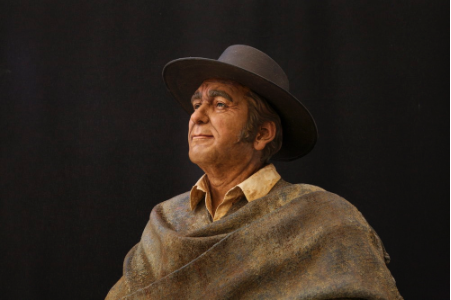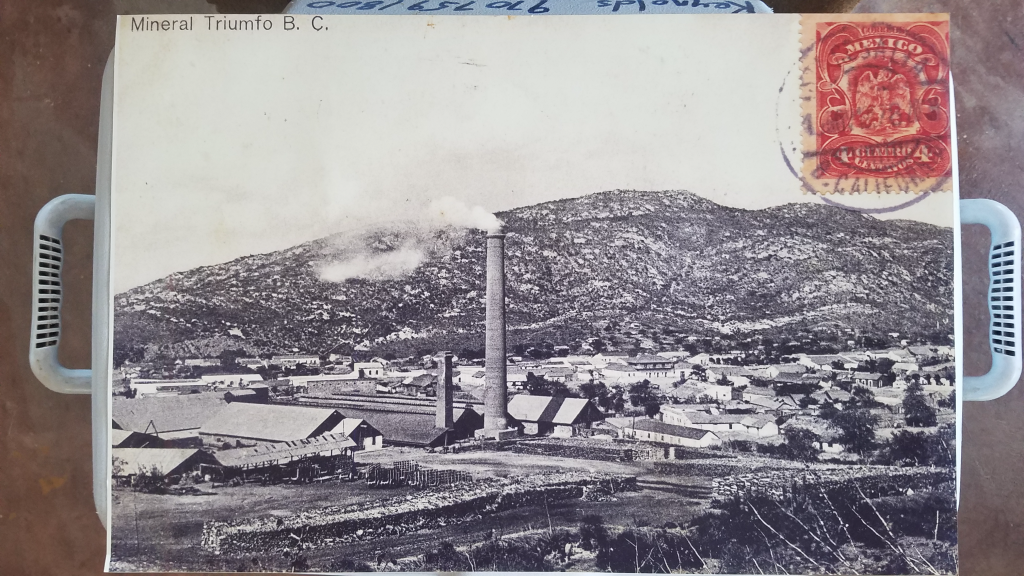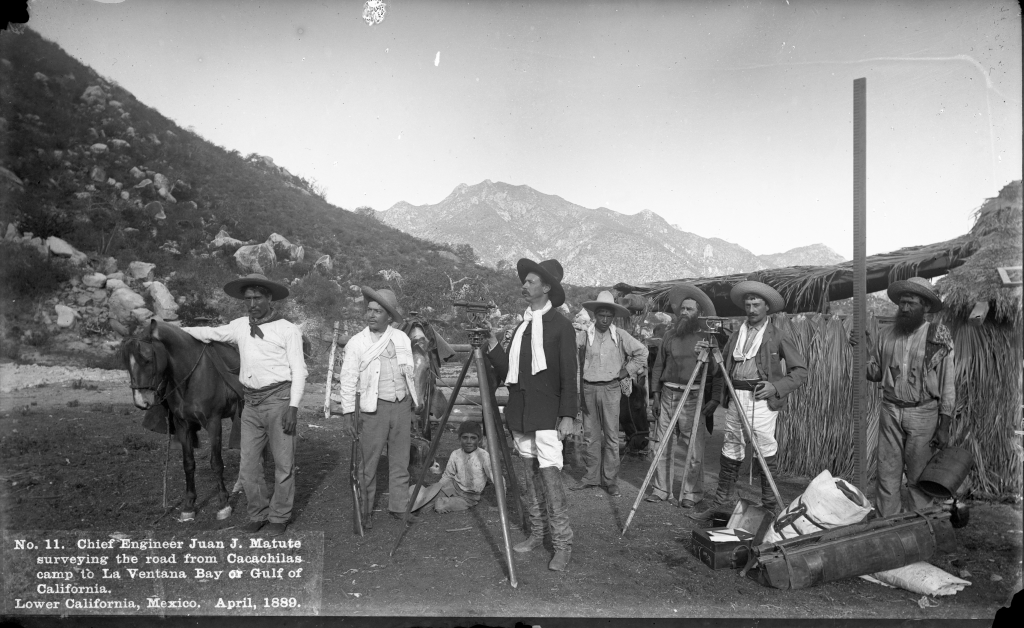One of the Jesuits’ prime motivations in establishing themselves in Baja California in 1697 was to pursue their dream of a theocracy, a society completely devoted to God, with all productive activity in the service of the missions as they worked to convert the native peoples. While there was some grumbling about the Jesuit lock on the economy, for the first 50 years of Jesuit rule no one came along with the entrepreneurial drive, financial backing, or political support to challenge it. But then the heavens opened and the Jesuit sands shifted. As recorded by missionary Miguel del Barco:
Because of an unusual storm…the sea cast up a great multitude of pearl oysters, mounding them on certain beaches from the 28th parallel on to the north. This area, to that time, had not been worked by pearl hunters. The Indians of that coast, recent Christians, knowing that soldiers desired and bought pearls, began to bring them in abundance to the men of the escort at Misión de San Ignacio, then the heathen frontier.

And so it happened that an act of God brought riches to the Jesuits’ earthly defenders and thereby created the first direct threat to their Baja California theocracy. The soldier who wrangled the majority of the profits from the great pearl bonanza was Manuel de Ocio, the Spanish son-in-law of the captain, who capitalized on his connections to broker the pearls and make the beginning of his fortune. In short order he resigned as a soldier, invested in pearling equipment and bought goods to trade with the Indians who were still collecting the pearls. Baja California’s first entrepreneur was launched, and he soon found he was not the only one eager to break the Jesuit monopoly. In 1743 the pearl-rich de Ocio went to Guadalajara where he found businessmen keen to push for a civil colony in Jesuit territory, and by 1748 he had laid claim to Santa Ana, site of an abandoned Jesuit chapel where a Spanish soldier had spotted silver ore in 1722. de Ocio created his home and cattle ranch there, and began mining silver near present day San Antonio. Real Santa Ana was the first secular settlement in Baja California, and San Antonio today is considered the oldest continuously settled town in the peninsula. The Jesuits were expelled from Baja California in 1767, but a thriving secular economy launched by de Ocio and built around mining continued for another 150 years.
Stories like de Ocio’s are the highlight and backbone of the Museo Ruta de Plata, the Silver Route Museum, which opened in the Baja Sur town of El Triunfo November 17, 2018. The brainchild of Christy Walton, Richard Kiy, John Reynolds, and Juan Jose Cabuto, the museum reflects the remarkable research the team conducted to resurrect and celebrate the mining heritage and societal changes wrought by de Ocio and others who came to the area to pursue their dreams. Troves of documents were recovered in the public archives of La Paz, descendants of key players in the town’s mining industry were tracked down and interviewed, and oral histories were gathered from families in the area who are direct descendants of the Mexican, French, German, Polish, Chinese, American, and English miners, entrepreneurs, teachers, tradesmen, artists, shop owners and others who created what was once the largest town in the Baja peninsula with one of its most diverse and fascinating communities.
Museo de Ruta Plata is part of a much larger project by Christy Walton, heir to a portion of the Walmart fortune, to create in the greater La Paz region of Baja Sur “a thriving economy and engaged social system that respects and nurtures our unique environment.” Her Baja-based Alumbra companies include: Rancho Cacachilas, a land management organization that engages in livestock management, gardening, honey and cheese production and ecotourism activities; Earth Ocean Farms, an offshore marine fish farming company; Sol Azul which engages in year-round oyster production, and Tenaja Holdings, a real estate development company that manages the silver museum. The integration of all these projects is readily found in the silver museum complex which includes Restaurant-Bar El Minero, a wonderful culinary destination built on the ruins of an old cantina, where on any given day you can enjoy traditionally-made cheese from Rancho Cacachilas, organic oysters from Sol Azul, and farm-bred totoaba (critically endangered in the wild) from Earth Ocean Farms. The museum itself was built on the site of some abandoned buildings that they believe once housed a tannery, all right next to the ruins of the silver mining and milling operations. In fact, it was when Walton saw some children playing in these ruins that she was inspired to create the museum as a way to help revitalize El Triunfo by promoting its cultural heritage, one that was perhaps already lost to its younger generations.

El Triunfo in its heyday. Photo courtesy of Museo Ruta de Plata
de Ocio started a major mining boom in the area and from 1862 to 1926 the network of gold and silver mining operations completely transformed the area, making El Triunfo and San Antonio the wealthiest towns in Baja California in the process. El Triunfo had been a sleepy little village of 175 souls in 1857, but by 1890 had grown to a vibrant hub of over 4,000 as people flocked to the area to make their fortunes. Money flowed and the residents invested in the good life; a huge number of pianos were imported from Europe, and classical music concerts and artistic performances were a regular feature of town life. Gourmands imported apples from San Francisco and the cantinas imported American beer from St. Louis and Milwaukee. It was even rumored that Gustav Eiffel, he of the Paris tower, designed the still-standing La Ramona smokestack in 1890 for the Progreso Mining Company. While the museum states there is no evidence that Eiffel designed the tower, for Eiffel fans it should be noted that there is no evidence that he didn’t either.

1890 was an important year for El Triunfo on another front as well. The United States enacted a federal law called the Sherman Silver Purchase Act, which effectively made the US government the second-largest buyer of silver in the world, second only to the British Crown in India. Under the terms of the act the government was required to purchase an additional 4.5 million ounces of silver bullion every month, in addition to the US$2 to $4 million required previously. Silver mining around El Triunfo surged. But the Sherman Silver Purchase Act, initially conceived of as a way to boost the economy and create sufficient inflation to allow farmers and miners to pay off debts that had become untenable due to deflation, was unsustainable. It contributed to a major economic depression in the US, and in 1893 was repealed. The US moved to the gold standard and the price of silver plummeted.
It was the beginning of the end for the mining towns of BCS. The mines struggled and the Mexican Revolution of 1910-1917 exacerbated their challenges. Ultimately, the silver boom ended as it began, with a monumental storm. This time however, instead of riches being tossed upon the shore, the hurricane of 1918 washed them away, destroying much of the town and rushing arsenic from shattered mines downstream, devastating local livestock along the way. 25 human deaths were recorded, and all ships in La Paz were reportedly damaged, sunk or run aground. The last mine in El Triunfo closed in 1926, and the town shrank back down to the sleepy little town of a few hundred folks that it is today.
Today Mexico is the largest producer of silver in the world, producing 5,600 metric tons in 2017. But no one in El Triunfo seems to be clamoring for a return to the old mining days. Turns out the quality of the silver in the area wasn’t that great anyway. A 1906 US Consular report on display in the museum notes that the ore of the area “is not high grade and is very rebellious.” But the high price of gold in the global market today has created persistent efforts from companies outside of BCS to establish open pit gold mining in the area once again. For its part, Museo Ruta de Plata makes it clear that although mining for minerals drove the settlement of the area, mining for knowledge is the long-term economic path forward for the region. Exhibits in the silver museum laud the extraordinary biodiversity and natural beauty of the area, alongside the scientific research and distinct ecotourism opportunities they represent. As with places like the Galapagos that have a similarly unique and biologically diverse environment, jobs based in sustainable tourism, conservation and research seem to be the hope for the resurgence of El Triunfo and the surrounding towns of BCS. Even the Jesuits would have been happy about that economic plan.
Sources for this article include: Harry W. Crosby, Antigua California: Mission and Colony on the Peninsular Frontier, 1697-1768; Juan Jose Cabuto of Museo Ruta de Plata; and the displays and websites of Museo Ruta de Plata. www.museorutadeplata.com.
© Copyright Sergio and Bryan Jauregui, Casa Payaso S de RL de CV, 2019
